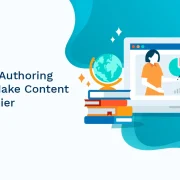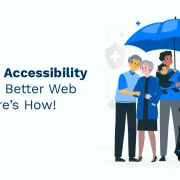
The Rise of E-Learning in The USA: Key Trends and Statistics
Summary
This article explores the growth of eLearning in the USA, highlighting key trends and statistics that reflect the increasing adoption of digital education platforms.
As the name suggests, eLearning is the method of using technology to enhance, facilitate, and expand educational content on the internet.
Initially designed as a computer-based information distribution system for educational institutions, eLearning is now used by a wide range of institutions, including big corporations, start-ups, the government, business groups, and non-profits.
Delivering information is only one aspect of today’s eLearning in education – it is highly interactive and available on demand, which significantly boosts learning engagement and retention.
After the pandemic, 73% of students in the USA intend to keep taking online courses. The USA is one of the top countries in the world for having successfully implemented eLearning in their education system. In terms of global comparison, the United States will produce the most revenue ($74,800.00m in 2023) in the upcoming years.
So, without further adieu, let’s learn more about the latest eLearning trends and statistics that reveal the power of eLearning in the USA.
Table of Contents:
The Key eLearning Trends of the USA
1. Custom eLearning
2. Learning Paths
3. Game-Based Learning
4. Micro-Learning
5. Mobile Learning
6. Scenario-Based Learning
The Key eLearning Trends of the USA
Even since the journey of eLearning started, we have all witnessed a lot of modifications that have shaped the education sector.
4 out of 5 college students who participated in a 2016 survey of 531 US students said that eLearning had improved their academic performance. Educators are always on a mission to make learning more fun and interactive for all kinds of students, resulting in new strategies and trends in eLearning every year.
Here are some of the key trends in eLearning in the USA that are going to have a powerful impact on the industry.
1. Custom eLearning
The performance of learners is improved by custom eLearning solutions.
With custom eLearning, organizations get the freedom to customize the themes, content, colors, fonts, images, and others based on the course. Such solutions are created specifically for your staff based on the job roles, business needs, and training requirements of organizations.
Besides that, custom eLearning offers practical knowledge to learners, so there are no gaps in the learning process. The learning materials are arranged to reduce cognitive load, improve learner understanding, and boost retention.
According to reports, retention rates are increased by 25% to 60% through e-learning in the USA. Since the learner is at the center of the custom eLearning courses, they engage the students and encourage them to finish the course.
So, it can be said that the trend of custom eLearning is here to stay.
2. Learning Paths
A learning path is a collection of associated courses that students can move through to master a specific topic or program. Multiple users can enroll in numerous courses simultaneously, saving you precious time.
LMSs with this feature provide users with the utmost satisfaction while learning content online, as it is very straightforward yet effective.
You can choose any one of the sequenced and learning choice learning paths to implement this feature. This feature also comes with controlled timeframes that enable creators to schedule when they want their courses to be made accessible to learners.
3. Game-Based Learning
The characteristics and core principles of games are implemented into educational activities through game-based learning. The games used in this strategy are so interactive and engaging that students become enthusiastic about spending more time learning.
Just like regular games, this strategy includes elements like leaderboards, badges, quizzes, point systems, discussion boards, and so much more.
Using challenge-based gamification to educate students improved their academic performance by up to 89.45% compared to those who just received lectures, according to a global study conducted in 2020.
Gaming significantly boosts the brain’s ability to memorize information. Playing games improves critical thinking, which increases the capacity to remember information for long periods of time.
Most games ask players to think quickly. They also need to use logic to resolve issues and finish levels by thinking so many steps ahead of the game.
In later life, this aids learners in developing their sense of logic, accuracy, and quickness of thought.
Also read, How to Use Educational Games to Promote Social-Emotional Learning in the Classroom
4. Micro-Learning
In simple words, microlearning is the method of acquiring new information in small parts. Each session of microlearning can be anywhere between 1 to 10 minutes, and its primary benefit is its speed.
Even those with long attention spans sometimes find it difficult to stay focused during lengthy learning sessions. But it makes it much easier for people to sit through learning or training when they are aware that it will only take a short while.
Microlearning is simple to make usable for all sorts of devices, not only computers because it relies on brief, bite-sized learning sessions. Moreover, not all learners learn the same way; microlearning ensures everyone can find their suitable style during their study sessions.
5. Mobile Learning
Mobile learning or mLearning refers to the usage of mobile devices to access educational materials. With this approach, users can easily access their learning materials as and when needed.
An important aspect of mobile learning is the fact that it emphasizes the learner’s mobility by allowing them to select the time and place they wish to access learning.
Additionally, the learners can study at their own pace, which boosts knowledge retention and engagement. Millennials and Gen-Zs spend so much time on their smartphones, and having the opportunity to learn from their most-used device makes them more eager to participate.
Mobile learning effectively increases learners’ productivity to a great extent, and the success rate is higher than that of learners who use desktops and other devices to learn.
As previously discussed, microlearning is heavily suited for those who use smartphones for learning, and the bite-sized content used in mLearning makes studying stress-free for all learners.
6. Scenario-Based Learning
Online training frequently makes use of scenario-based learning (SBL), a strategy that employs the “active learning” methodology. It gives the students a relatable and extremely relevant learning experience because it uses real-life scenarios.
The main benefit of scenario-based learning is that it lets employees learn in a setting with low stakes, which reduces the possibility of making mistakes in real-world situations that could be dangerous for them or expensive for the organization.
Using scenario-based learning in sales and safety training can produce fantastic results.
Know more, The Power of Scenario-Based Learning to Transform Higher Education
Conclusion
E-learning has effectively established a foundation for higher education, and it keeps on making it simpler for people all over the world to pursue their dreams, regardless of age or prior knowledge.
The impressive eLearning statistics show us how far it has come over the years. Want to incorporate the latest eLearning trends into your curriculum? Check out Hurix to find collections of the finest resources in one place!

Senior Vice President
Julia brings over 20 years of global experience in digital learning and business strategy. She specializes in client success, enterprise learning solutions, and driving growth through innovation, with a focus on AI, VR, and emerging technologies across diverse industry verticals.




